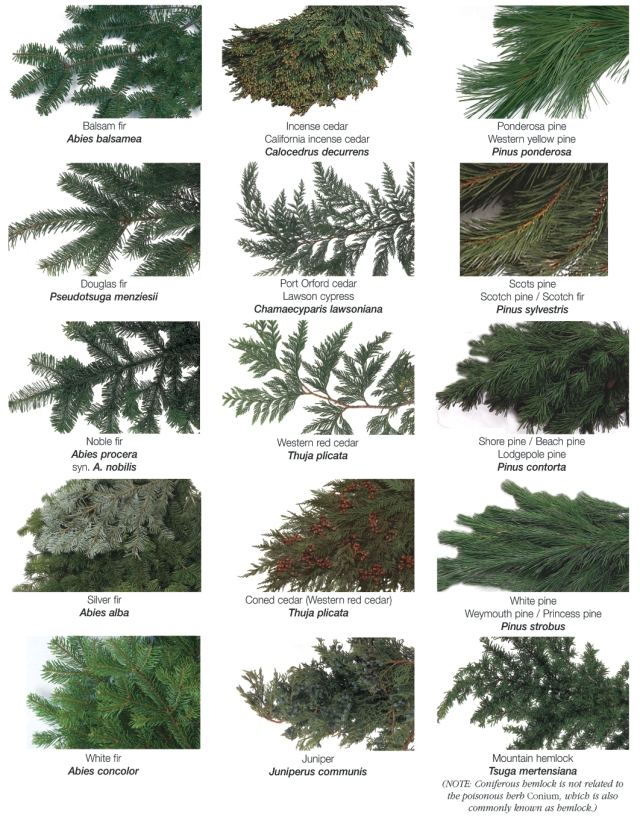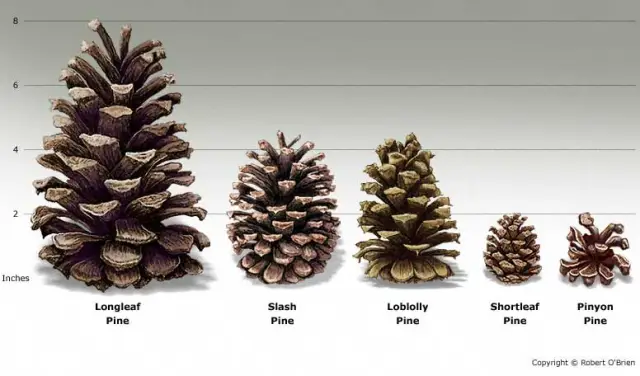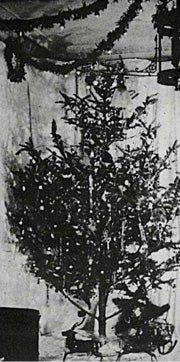Enjoy the game!!
Thanks for letting us be a part of your party!!!





Regular and After Hour Flower Delivery
Enjoy the game!!
Thanks for letting us be a part of your party!!!





 Every Valentine’s Day, chocolate becomes part of the romantic holiday. Why? Is it because of all the health benefits of chocolate? Is it because it is simply satisfying? Or, is it just the tradition of it all….
Every Valentine’s Day, chocolate becomes part of the romantic holiday. Why? Is it because of all the health benefits of chocolate? Is it because it is simply satisfying? Or, is it just the tradition of it all….
I think the tradition angle wins out. Chocolate has been referred to as “the food of the gods” since the time of the Aztec Indians. In fact the Aztec ruler, Montezuma believed chocolate was an aphrodisiac. Christopher Columbus enjoyed the chocolate he discovered in the Americas. So, he brought it back as a tribute to Queen Isabella of Spain along with other treasures like gold! This new luxury, chocolate, and its legend as an aphrodisiac quickly made its way across the aristocracy of Europe.
In time though, chocolate made its way to the masses. By the 1800s, the Cadbury Brothers had set up shop in England making and selling chocolate to average citizens. In 1861, Richard Cadbury created the first ever heart-shaped box for Valentine’s Day. Thus, began the common link between chocolate and Valentine’s Day. A new tradition had begun.
And a few fun supporting factoids:
1) Modern science has linked the chemical phenylethylamine in chocolate to feelings of excitement, attraction and even pleasure. Maybe Montezuma was indeed onto something. You can decide on that one for yourself.
2) A survey SuzySaid/Acton and The Happy Chocolatier conducted with local women indicated that most wanted the chocolate Valentine’s Day gifts delivered to the home (not work). And, that they would share the treats with their loved ones (great news for the buyer).
3) According to HolidayInsights, though women make most of the chocolate purchases during the year (75%), men make the most purchases for Valentine’s Day (75%).
So, my guess is that men buy chocolate because it IS part of the Valentine’s Day tradition. And, from what our recent survey found – part of that chocolate giving tradition is now to send the gifts home or to simply bring them home!

Houseplants are having a resurgence in popularity, and there is a lot of information about growing and care. One of my favorite authors, Peter McHoy, has been writing books on houseplants for many years. His recent “The Complete Houseplant Book: Identifying, Choosing and Maintaining Plants for Your Home” (Anness Publishing, 2015) would be a good title for your gardening shelf.
Just as in outdoor gardens, you should consider the needs of each plant you choose, since growing conditions are not the same for all. Those to be informed about include light and watering, types of containers, soils, plant diseases and insects. This column cannot possibly address all these issues in detail, so I will recommend some helpful websites.
Water and light are keys for success. Over-watering, especially in winter, is the No. 1 killer of houseplants. Since they take in energy from sunlight to produce food, and in winter there is less light, plants need less water at this time of year. Like many animals, in winter plants want more rest than in other seasons.
I water when the soil has dried out in roughly the top one-third of the pot. However, indoor cacti and succulents need less water than an African violet. This is why knowing each plant’s needs is important.
Observe the light in your house, and choose plants that are appropriate for the space. Low-light areas are those where there is no direct sun. Medium or filtered light is where sunshine may be coming through a curtain. Bright light is the where indoor sunlight is the strongest. North-facing windows will likely have the least amount of light, west facing the most.
Determine what the light patterns in your house throughout the day. The places that have the sunlight the longest are the spots for sun-loving plants. And even indoors, sunlight patterns change with the seasons
Want a pet-friendly houseplant with blooms? Look no further than African Violet. This versatile, hardworking houseplant is right at home with your pets. It comes in a range of purple hues, and it’s low maintenance and thrives without bright light.
Tillandsia varieties are modern, cool, and best of all, safe for pets. But beware: Cats and dogs alike will love chewing on their spindly leaves—make sure you keep them out of reach.
The variegated gray-and-green leaves of Aluminum Plant make it an attractive option for the home, as well as a great nontoxic plant for cats and dogs alike.
Unlike its dangerous holiday counterpart amaryllis, Christmas cactus is thankfully nontoxic to cats and dogs. It may cause intestinal discomfort if ingested, but overall it’s a safer choice than many other festive plants.
Identifying ferns can be a bit tricky, as there are several plants with the word “fern” in their name that are not actually part of the Pteridophyta family. True ferns such as Boston and maidenhair (pictured) are fair game for pet-friendly households; beware of toxic misnomers such as asparagus fern, which is actually part of the lily family.
The friendship plant is named for the ease with which it can be divided and shared—so if you happen to receive such a gift, rest assured it’s safe for your cats and dogs. But beware, pets may be especially drawn to the fuzzy, crinkly leaves.
Indoor herb gardens are an easy, fun way to add fresh flavor to your cooking. But not all herbs are created equal when it comes to pet safety. Standards like lavender and oregano are off-limits, but pets can handle basil (pictured), sage, and thyme.
Pretty lace flower vine grows best in hanging baskets, out of reach of curious cats and dogs. But should an extra-persistent pet make their way into the pot, they’ll be safe.
This quirky plant with blooms that resemble tubes of lipstick is happily safe for cats and dogs alike. A native of the tropics, it thrives in bright light and loves being outside in the warmer months.
Parlor palm is the perfect solution for pet owners looking to add a small tree. Safe for cats and dogs, it’s also great for beginners.
The ever-common phalaenopsis orchid (the one you’re most likely to see in the floral shop) isn’t harmful to pets. But one thing to watch for: Dogs and cats who love to chew may get into trouble in the potting mix, which contains a large amount of bark.
Polka dot plant is perfect for adding a fun splash of pattern to miniature gardens, terrariums, mixed containers, and more. Available in an array of colors such as white and pink, it’s as versatile as it is whimsical.
Prayer plant, topping out at 6-8 inches, is ideal for small spaces such as bookshelves and end tables. Its red, cream, and green leaves curl up at night, giving it its name. What’s more, it’s one of the easiest houseplants you can grow.
This indoor gardening classic is a staple for many reasons, not to mention it’s a cat- and dog-friendly plant. A fan of both pots and hanging baskets, this happy-go-lucky plant will thrive anywhere indoors.
Many of the most popular succulents—including hens and chicks, echeveria, and rosettes—aren’t problematic, but with so many varieties on the market, it’s best to research each individual plant. Jade, for example, while similar to other succulents, is actually dangerous.
Yesterday it snowed! Not the very first snow of the year but one of the firsts and it was gorgeous. It frosted the top sides of the tree branches and, even more beautifully, covered the ugly pots left on the back porch after I killed the plants in them. The white on evergreen combination is one of my favorite natural color pairings and now that the last of the leaves have fallen from the deciduous trees (that’s fancy-sciency for trees that lose their leaves in the winter) take a moment to show off the variety of evergreens left to your family (conifers, in case you were wondering).
Use the charts below to help you identify evergreens at a glance (Massachusetts has a lot of Pine, Cedar, and Juniper). Make a game out of it with your little ones and before you can say I-totally-looked-up-deciduous-just-for-this-post your whole family will be able to identify evergreens for their own friends.



By the time 1880 rolled around, Edison had his incandescent light bulbs pretty well figured out, and was on the lookout for a way to advertise them. Brian Murray’s article “Christmas Lights and Community Building in America” [PDF] describes Edison’s marketing trick during that holiday season. To display his invention as a means of heightening Yuletide excitement, he strung up incandescent bulbs all around his Menlo Park laboratory compound [PDF], so that passing commuters on the nearby railway could see the Christmas miracle. But Edison being Edison, he decided to make the challenge a little tricker by powering the lights from a remote generator eight miles away.




Throughout history, herbs have been used for everything from flavoring food to promoting healing. The plants themselves are not only fragrant but are also quite beautiful, making them a pleasure to grow. Planting an herb garden is a great way to get in touch with nature and to enjoy all of the benefits that these plants have to offer.
 One of the keys to success is to plan your garden carefully before you even think about putting seeds in the ground. During the initial planning phases, you may want to consider centering your herb garden around a particular theme. Choosing herbs that complement one another and that can be used toward a common purpose can make your garden more useful. Here are some of the most popular types of herb gardens that you may want to consider:
One of the keys to success is to plan your garden carefully before you even think about putting seeds in the ground. During the initial planning phases, you may want to consider centering your herb garden around a particular theme. Choosing herbs that complement one another and that can be used toward a common purpose can make your garden more useful. Here are some of the most popular types of herb gardens that you may want to consider:
Kitchen Gardens
The right herbs can impart rich flavor to food, taking it to a whole new level. If you choose to plant a kitchen garden, you should focus on growing herbs that are commonly used in cooking. This includes herbs such as basil, rosemary, thyme, oregano, parsley, cilantro, sage, and sweet marjoram. Having fresh herbs growing in your own backyard can open up a world of possibilities in terms of the dishes that you can create in your kitchen.
Many herbs have medicinal properties that can promote mental and physical well-being. Planting a garden filled with medicinal herbs can be a great way to harness the healing power of these plants. Some plants that you may want to include in your garden include echinacea, chamomile, yarrow, peppermint, ginger, lemon balm, and St. John’s wort.
Remember, however, that just because herbs are natural doesn’t mean that they are safe if they are used incorrectly. Always educate yourself about proper herb usage before using them to treat any type of medical condition.
Tea Gardens
Take your love of herbal tea to the next level by planting a tea garden filled with herbs such as bee balm, chamomile, lemon balm, mint, lavender, passionflower, ginger, and stevia. When making tea, mix and match fresh herbs from your garden to come up with your favorite combinations. You can also dry the herbs and store them so that you can continue to make fresh tea even after the end of the growing season.
Ornamental Gardens
Herbs don’t necessarily have to serve a practical purpose. Planting an ornamental garden allows you to celebrate the beauty of the plants themselves, many of which have stunning foliage and eye-catching flowers. These plants also tend to attract butterflies, bees, and hummingbirds, providing you with an opportunity to enjoy tiny garden visitors all summer long. Some plants that you may want to add to your garden include rosemary, thyme, hyssop, lavender, bee balm, feverfew, marshmallow, and echinacea.
Herb gardens can serve a variety of different purposes. When you first begin planning your garden, think about how you want to use the herbs that you grow. Developing a cohesive plan for your garden allows you to make the most of the space.
In August 1620, the Mayflower, a 180-ton ship, set sail from Southampton, England. After difficulties with the vessel, resulting in her return to port, finally the voyage began. Her 102 passengers were to become some of the founding pilgrims of the United States of America, and the initiators of one of this nation’s most popular holidays.
After weeks of plowing through the tumultuous Atlantic waters, battling strong winds, pounding waves and a number of problems with their vessel, the pilgrims spotted Cape Cod, off the coast of Massachusetts. The stormy weather was brewing so strongly that they had arrived there by accident. Their intended location was off the Virginia coast, where other pilgrims had begun colonies.
Before anchoring at Plymouth Rock and disembarking to explore the territory, the pilgrims devised the “Mayflower Compact.” This was to serve as the basis for governing their new colony, where all would have the freedom to worship God as they chose.
The compact stated, “We whose names are underwritten, the loyal subjects of our dread sovereign lord King James…Having undertaken, for the glory of God, and advancement of the Christian faith, and honor of our king and country, a voyage to plant the first colony in the northern parts of Virginia, do by these presents solemnly and mutually in the presence of God and one of another, covenant, and combine ourselves together into a civil body politic, for our better ordering and preservation, and furtherance of the ends aforesaid; and by virtue hereof to enact, constitute, and frame such just and equal laws, ordinances, acts, constitutions, offices from time to time, as shall be thought most meet and convenient for the general good of the colony: unto which we promise all due submission and obedience. In witness whereof we have hereunder subscribed our names; Cape Cod, the 11th of November…” (Mourt’s Relation: A Journal of the Pilgrims at Plymouth).
The next few months would prove to be difficult and trying. More than half of the original pilgrims did not survive the first, long, bleak New England winter. Often, two or three people would die in one day due to infection and sickness.
But, with the approaching of spring came new hope. The survivors built homes and planted crops. They made friendships with local Indian tribes, and traded with them. The passing of winter allowed the pilgrims to labor and produce, causing the colony to flourish.
After reaping their first harvest in the fall of 1621, the pilgrims dedicated a day for thanking God for the bounty with which He had blessed them. They had endured the many hardships that came with pioneering a new land. They toiled through building an entire colony from what was simply wilderness. They were at peace with their neighbors. And they were especially grateful for their harvest. This allowed them to gather and store plenteous food and crops for the long and brutal winter ahead.
Their governor, William Bradford, proclaimed a day of thanksgiving toward God. They prepared a great feast to enjoy with family and friends—both from within the colony and with neighboring Indian tribes.
The following quotes from America’s God and Country demonstrate Bradford’s and the colony’s thankfulness for God’s protection and blessings:
“Being thus arrived in a good harbor, and brought safe to land, they fell upon their knees and blessed the God of Heaven who had brought them over the vast and furious ocean, and delivered them from all the perils and miseries thereof, again to set their feet on the firm and stable earth, their proper element.”
In reminiscing upon the colony’s success, Bradford continued, “Thus out of small beginnings greater things have been produced by His hand that made all things of nothing, and gives being to all things that are; and, as one small candle may light a thousand, so the light here kindled hath shone unto many, yea in some sort to our whole nation; let the glorious name of [God] have all the praise” (ibid.).
Clearly, pilgrims of the Plymouth colony gave God credit for all that they had. Notice the many references to God, and their acknowledgement of how He granted them so many blessings. The pilgrim’s beliefs were firmly entrenched in the realization of God’s presence and intervention in their everyday lives. Thanksgiving Day began because of this belief. It is a day dedicated to giving thanks to God for the many things we often take for granted.
Over the years, many colonies did keep Thanksgiving, but they kept various other days of thanksgiving, at different times of the year. It is a popular misconception that the pilgrims kept Thanksgiving on the same day each year following the first celebration in 1621, and that the other colonies began keeping that same day. In truth, it was a tradition always used to highlight and show gratitude for important events, such as bountiful harvests, victories in battle, etc. Whenever these took place, the colony called for the celebration of a day of thanksgiving.
In the late 1700s, during the American Revolution, the Continental Congresses suggested the yearly observance of a day of national thanksgiving, in hopes to unite factious states.
In 1817, the state of New York adopted Thanksgiving Day as an annual holiday. By the mid-1800s, other states likewise adopted the practice. In 1863, President Lincoln appointed it as a national holiday, and gave a Thanksgiving proclamation. Each president since then has issued a proclamation, announcing the celebration of this day.
DIY PAPER LANTERNS.
Lanterns
Or paper pumpkins? Or paper gourds? Or paper balls?
I am not sure what to call these guys. I am totally in love with them though.
This fall and holiday season, I am working on bringing a little bit of DIY decorations to our apartment and to this blog. I’m re-channeling my Paper Source days. When I worked there it was like, what do we need? A wedding cake? Make it out of paper. A tree? Make it out of paper. A flower? An owl? A pinwheel? A wreath? A cartwheeling monkey? HURRY, GET THE CARDSTOCK.
And if we could do it there… I can do it here.
Or at least try.
These lanterns are totally inspired by the gourd place card kits that Paper Source sells. They are adorable. Probably my favorite paper kit next to this wreath.
I just blew up the concept & hung them from the ceiling.
Supplies needed : 8.5×11 cardstock in various colors, string or ribbon, a hole puncher, some sort of sticker or tape, a pushpin for tacking them to your ceiling.
Cut your cardstock into strips that are equal in length and width. I did 16 strips of 11″ x 1″ and 14 strips of 8.5″ x .75″.
Stack the papers and punch holes through the top and bottom of each strip.
String the strips on your piece of string or ribbon. Seal the string with a piece of tape or sticker.
String through the top holes.
Pull the string tight until the paper bows out. Tie off the top (make sort of a bow/messy knot. It just needs to be big enough that the string doesn’t go back through the paper).
Fan out the strips until you have created a sphere shape. (For easy storage, just unfan and box up.)
Hang from your ceiling and secure with a push pin. (note : my string in the images shown ended up being too short. I just added some extra length by tying two pieces together. Your string length will depend on how low you want the lanterns to hang.)

Leave a Special Message for the Flowers In ORDER NOTES in the shipping address section - We Deliver 7 Days a Week" Dismiss